Part 5: Michael Paine and the Backyard Photos
Ruth and Michael Paine responded exactly the same way when news broke that shots were believed to have originated from the Texas School Book Depository: they both immediately assumed that Oswald was involved. During a phone call placed at one pm November 22, 1963, Michael Paine calling from his office at Bell Helicopter to Ruth at home in Irving, this assumption receives a qualification: “the male voice was heard to comment that he felt sure LEE HARVEY OSWALD had killed the President, but did not feel OSWALD was responsible, and further stated, “We both know who is responsible.”1 Whoever it is Michael Paine believed “responsible” for the assassination it has remained closely held, as neither he or Ruth Paine have faced official scrutiny since 1968.
Michael Paine intersects with the backyard photo story at least six ways, surprising since the official story portrays him as akin to a bystander, simply caught up in events. Michael Paine was one of a handful of known visitors to 214 West Neely Street. The Imperial Reflex camera said to have taken the backyard photos was apparently stored at his house in the autumn of 1963. He saw a backyard photo at the Dallas Police station the night of the assassination. The backyard photos known as 133-A and 133-B were discovered at his house the following day. He was involved in the delivery of a box of records, from which the de Mohrenschildt backyard photo would be later discovered. Michael Paine, with his wife Ruth, had dinner with the de Mohrenschildts soon after the photo was discovered in 1967. Years later, around the time of Oliver Stone’s JFK, Paine began claiming that Oswald actually showed him a backyard photo when he first visited the West Neely Street apartment in April 1963.
April 1963: Michael Paine Visits 214 West Neely
Mr LIEBELER: Did you ever make the acquaintance of Lee Harvey Oswald?
Mr PAINE: Yes.
Mr LIEBELER: Would you tell us briefly the circumstances under which that occurred?
Mr PAINE: My wife invited Lee and his wife over to supper one evening.
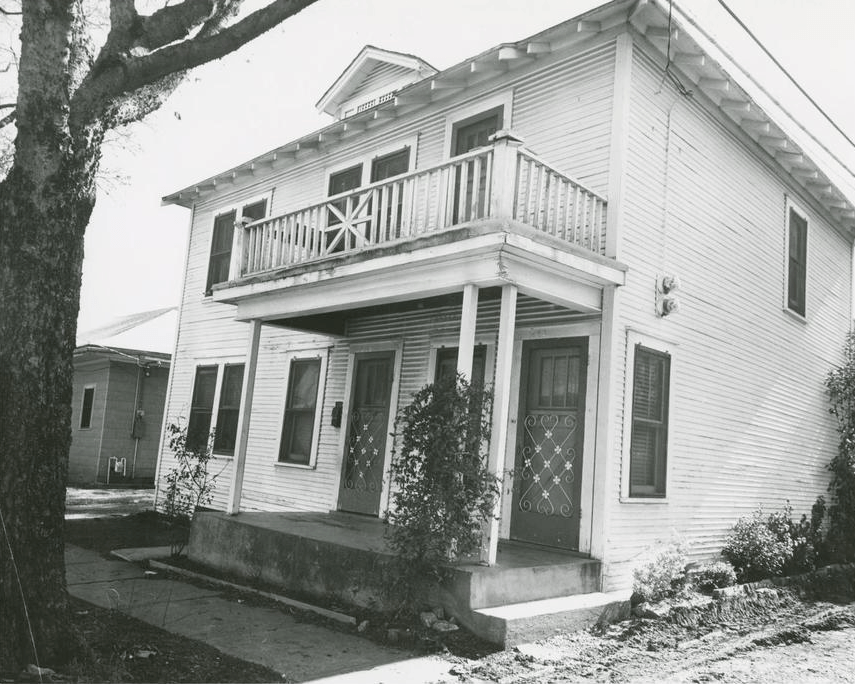 |
Michael Paine arrived by automobile at 214 West Neely Street around 6 PM in the late afternoon of April 2, 1963.2 He was there by arrangement, to pick up Lee and Marina Oswald and their young daughter, and transport them to the Paine’s home in Irving for a dinner engagement. At the time, Lee Oswald had begun his final week of employment at Jaggars-Chiles-Stovall, having previously received his notice. Allegedly, the backyard photos had been exposed two days before. Paine was brought upstairs to the Oswald’s modest second-floor apartment. According to him, “Marina took about half an hour to pack all the things for Junie. Meanwhile, I was talking to Lee at their house there.”3
The subsequent thirty minute delay, or conversation, or briefing, is portrayed as a chance event allowed by the circumstance of Marina’s packing bags for the trip to Irving. The two men started up a conversation based on Oswald’s experiences in the Soviet Union. Michael Paine: “I asked him what he was doing, his job ... I asked him about Russia ... I wanted to know why he had gone to Russia and why he had then come back ... I asked him how was it they so readily accepted (him) ... he spoke more with disfavour of the Soviet Union ... I wasn’t sure whether he was speaking derogatively in order to win my good graces or thinking he would win my friendship that way ... I was asking him questions, taking his answers.” (WCH II, pp. 393-398)
Michael Paine’s account of the conversation held during the half-hour delay at the Neely Street apartment fills ten transcript pages in the Commission Hearings (WCH II pp 393-402). As he concludes this detailed account, largely concerned with Oswald’s experiences in Russia, he tells the Commission: “What you have heard now occurred mostly in the first half hour when I was speaking directly to him when I met him ... in all the subsequent conversations, you are going to get less information in what he said.” (WCH II, p. 398) Paine would maintain he and Oswald had a total of four conversations in the spring and autumn of 1963.
General Walker ’s name came up later during the April 2 visit, apparently during or subsequent to the dinner at the Paine home in Irving.4 Paine: “I was still trying to find common ground with him, and I think we probably spoke critically of the far right. It seems to me we may have mentioned Walker ... My memory is very foggy ... a friend of ours ... just achieved her citizenship papers ... and General Walker had been invited to lead the singing [sic] ... she was rather sorry that Walker should take it upon himself to define ... what this country stands for. So I think I mentioned this episode to him ... and I think (Oswald) smiled and nodded his assent ... I don’t think he made any important remarks about Walker ... that is the only time, probably the only time we mentioned Walker.” (WCH II, p. 402)5
Michael Paine drove Lee, Marina and daughter June back to Neely Street to conclude the evening. He claimed he did not see Lee Oswald again until October. Paine would provide material support for Ruth Paine’s efforts in housing Marina Oswald, and transporting her to and from New Orleans, ostensibly as a means to brush up her Russian language skills. The Imperial Reflex camera which took the backyard photos was probably transported to New Orleans in May, in Ruth Paine’s station wagon, included with the Oswald belongings or on her own initiative.
The New Orleans photo set, taken by that camera, features eleven photos, which could be said to represent a single twelve exposure roll of film. The eleven photos consist of similar versions of effectively four separate poses or views, suggesting the photographer was intent on shooting out the roll of film on this occasion. The Oswald and Paine families enjoyed a New Orleans tourist day on Sunday May 12, but no photos were taken on that occasion. If Ruth Paine was responsible for the New Orleans set, then the likeliest date was Monday May 13, when Oswald was at work. It is possible that Ruth Paine did not reveal to Lee that the hard-to-forget Imperial Reflex camera was in her possession, or else it was uncovered as the Oswald possessions were moved into the Magazine Street apartment. It is possible the roll of film was already in the camera. Ruth Paine may have returned to Irving with this camera, as there are no other personal photographs in the Oswald record dated after May 1963.6
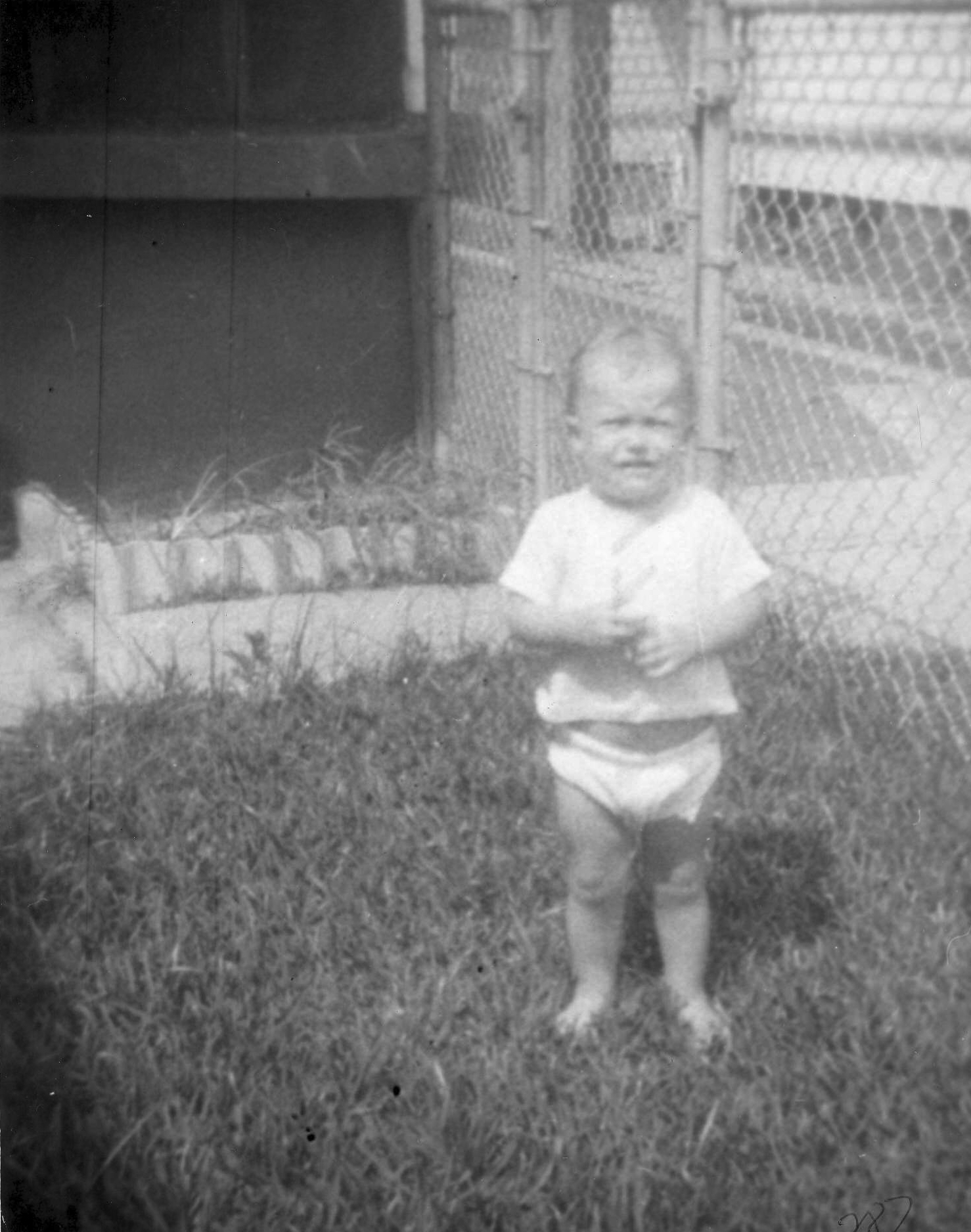 |  | 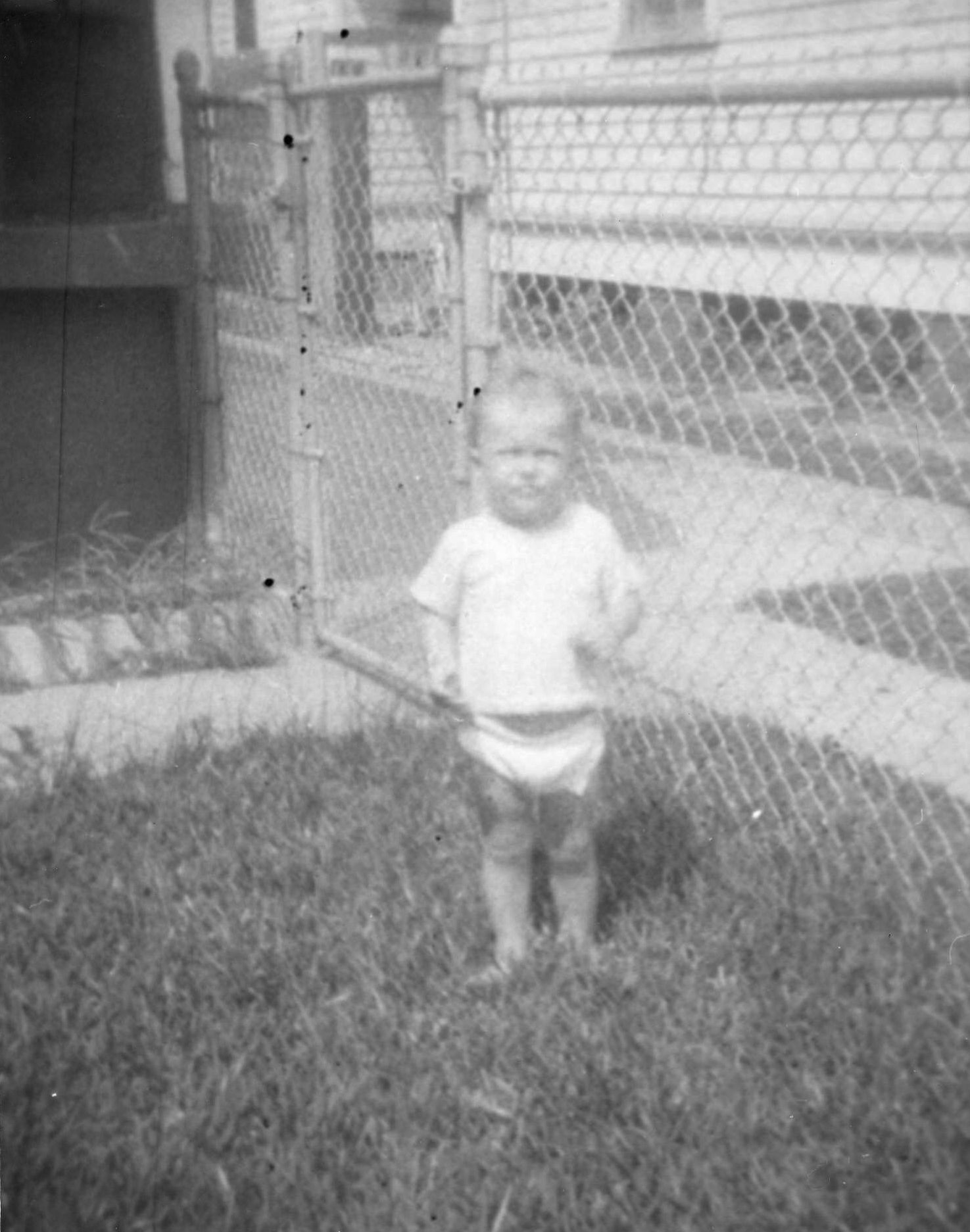 |
| The eleven New Orleans photos feature four groups of similar views. |
October 1963: Oswald, Michael Paine and the ACLU
November 10, 1963, the Sunday of a long weekend, the last weekend he would in fact spend with his family, and Lee Oswald, according to Ruth Paine’s timeline, “spent the entire day ... watching television.”7 Michael Paine remembered this occasion before the Warren Commission: “ I think that weekend I remember stepping over him as he sat in front of the TV ... thinking to myself for a person who has a business to do he certainly can waste the time. By business I mean some kind of activity and keeping track of right-wing causes and left-wing causes or something. I supposed that he spent his time as I would be inclined to spend more of my time if I had it, trying to sense the pulse of various groups in the Dallas area.” (WCH II, p. 412)
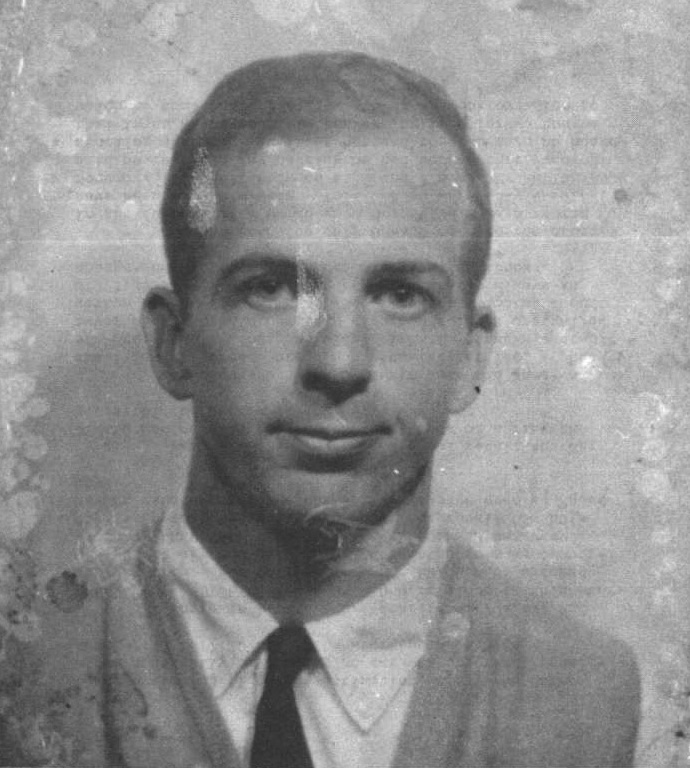 |
| Oswald, September 1963 |
The inquiries of Commission counsel Wesley Liebeler switched at this point to topics related to the informal driving lessons Lee was receiving from Ruth Paine, leaving aside the curious aspects to Michael Paine’s observation: Oswald had a “business to do”, he had “activity ... keeping track of right wing causes and left-wing causes”, an inclination shared by Michael Paine, “trying to sense the pulse of various groups in the Dallas area.” Was this a hobby for both or either men? Was this activity more exactly described as a “business to do”? If it was a business, monitoring political activity, which Paine was inclined to do more of but had time constraints, might his annoyance with Oswald be generated from having sub-contracted, so to speak, some of this “keeping track” to Oswald? Paine was questioned by the FBI in June 1964 over a report he had talked about Cuba and Oswald with students of Southern Methodist University at Luby’s Cafeteria in April or May 1963. Paine said he was in the habit of eating lunch on Sundays at Luby’s, and would engage in “intellectual conversations or debates concerning world affairs with various SMU students ... he did not specifically recall discussing (Oswald) with any of these SMU students ... although he could very well have since at this time he was acquainted with OSWALD and OSWALD’s background. (CD 1245, p. 196)
On October 2, 1963, Oswald had resurfaced in Dallas, after seeing off Marina, June and Ruth Paine in New Orleans on September 23.8 Oswald stayed at the YMCA for two nights, and then spent the weekend of October 4-6 at the Paine home in Irving. The following week, Oswald rented a room at Mary Bledsoe’s Oak Cliff rooming house, while he searched in Dallas for a new job. Bledsoe would later tell the FBI that Oswald told her at least twice “he was attempting to obtain work at Texas Instruments and Collins Radio.”9
On Sunday night October 13, although Ruth Paine’s timeline says “OSWALD was at the PAINE home all during this day and night,” (CE 2124) Oswald, or someone identical to him, was seen sitting at the back of the room at a meeting sponsored by the Student Directorate of Cuba (DRE) (CD 205, p. 646). “This individual spoke to no one but merely listened and then left.” General Walker was also in attendance at this meeting. How Oswald knew of, or traveled to this meeting and then back to Irving, is not known.
Ruth Paine took Oswald into Dallas the following morning, and Oswald moved from Bledsoe’s to a rooming house at 1026 North Beckley. Two days later, Oswald began work at the Texas School Book Depository. Two days after that, Lee Oswald turned 24 years old. On Sunday night, October 20, Marina went into labour and daughter Rachel was born. This began a busy week for Oswald.
On Wednesday October 23, Oswald attended a “United States Day” right-wing political rally featuring General Walker, a response to the Adlai Stevenson United Nations Day event scheduled for the following evening. That next night, as Stevenson spoke in Dallas, the event suffered a vigorous protest by right-wing demonstrators organized in part by Larrie Schmidt. Stevenson would be struck by a placard. Michael Paine would express to the Warren Commission his understanding that Oswald was in attendance at this protest. Paine, for his part, attended a John Birch Society meeting on this same night.10 He would explain: “I have been to a number of rightist meetings and seminars in Texas.” (WCH II, p 389) Michael Paine would say of Oswald: “ I gathered he was doing more or less the same thing ... I didn’t inquire how he spent his free time but I supposed he was going around to right wing groups ... familiarizing himself for whatever his purposes were as I was.” (WCH II, p. 403)
 |
Ruth Paine’s timeline features the following entry for October 25, 1963: “LEE OSWALD came out after work with WESLEY FRAZIER and saw his wife and baby for the first time after they had left the hospital.” Oswald soon left with Michael Paine, to attend a Dallas meeting of the American Civil Liberties Union. Paine: “I took him in my car, he and I alone, and on the way, which takes about 35 minutes, described the ACLU to him, and he didn’t know about it, and described its purpose.” (WCH II, p. 407)11 During the meeting, Oswald stood and challenged an opinion from the moderators regarding the religious tolerance of the right-wing. Paine: “Lee at this point got up, speaking loud and clear and coherently ... reporting that he had been to this meeting of the right-wing group ... two nights before and he refuted this statement, saying names and saying how that people on the platform speaking for the Birch Society had said anti-Semitic things and also anti-Catholic statements ... ” (WCH II, p. 408) Oddly, Michael Paine uses a generality (Oswald “saying names”), instead of reporting that Oswald referred specifically to General Walker, as Paine’s co-worker Frank Krystinik, also invited to this meeting, observed.12
As the meeting broke to informal discussion, Krystinik, who had been informed earlier that Oswald was a Marxist, engaged in a debate on economics with Oswald and another older man. Michael Paine: “in this ... argument that he had with Frank and a third person, on the way home he asked me if I knew that third person and whether I thought he was a Communist, Lee thought the third person was a Communist, and he gave me some reason ... a receptivity to some words spoken about Castro. And I thought that was such a feeble reason ... he must be out of it if that is the way he has to find his fellow travellers.” (WCH IX, p. 456)
Shortly thereafter, Oswald wrote to Communist Party USA newspaper The Worker, a letter postmarked November 1: “Through a friend, I have been introduced into the American Civil Liberties Union Local chapter, which holds monthly meeting on the campus of Southern Methodist University. The first meeting I attened (sic) was on October 25th, a film was shown and afterward a very critical discussion of the ultra-right in Dallas ... Could you advise me as to the general view we have on the American Civil Liberties Union? And to what degree, if any, I should attempt to highten (sic) its progressive tendencies? ... some of those present showed marked class-awareness and insight.” (Johnson Exhibit 7)
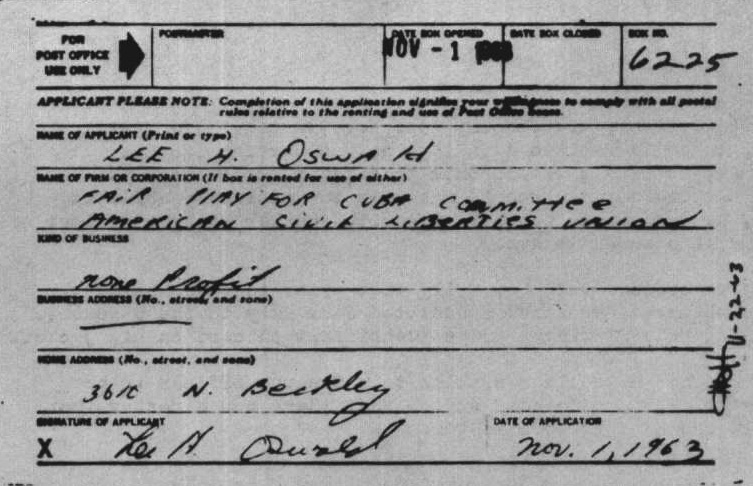 |
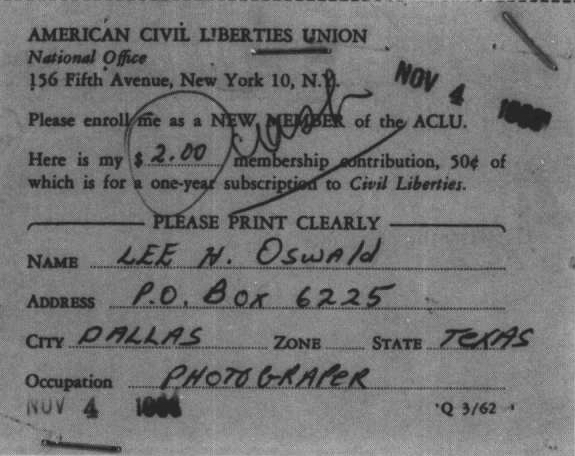 |
On the same day, previous to mailing this letter, Oswald rented a new Dallas post office box and listed both the Fair Play For Cuba Committee and the American Civil Liberties Union on the postal form (Holmes Exhibit 1).13 Oswald mails a membership application to the ACLU that same day. He includes two dollars in cash for the membership fee and lists his occupation as “photographer”. He adds a handwritten letter which requests notification on how to contact “ACLU Groups in my area,” even as he already knows they hold monthly meetings at SMU. (CE 783) Michael Paine had been an ACLU member for some years, and Ruth Paine was the local treasurer.
Following the assassination, the ACLU had to react defensively after Dallas Bar Association president H. Louis Nichols met with Oswald on Saturday afternoon November 23, then appeared on television to reveal Oswald was an ACLU member and requested an ACLU lawyer if John Abt was not available. By Wednesday November 27, a reporter from the Dallas Times Herald had been informed of the Oswald postal form listing the ACLU along with Fair Play for Cuba Committee as the assassin’s specified organizations. By that afternoon, the ACLU executive were anticipating “danger in the future, as a result of the tragedy of last Friday, that civil liberties will be under increased stress.” (CD 205, pp. 704-708)
November 22, 1963: Michael Paine Is Shown A Backyard Photo By the Dallas Police
According to Michael Paine, he was asked at the Dallas Police station Friday night November 22, 1963, if he could “identify the place where Lee was standing when he was holding this rifle ... I identified the place by the fine clapboard structure of the house ... the house has an unusually small clapboard.“ This, taken at face value, reveals an alert observational skill set and excellent memory retention as, according to Paine, he had only visited 214 West Neely Street once, almost eight months previous.14
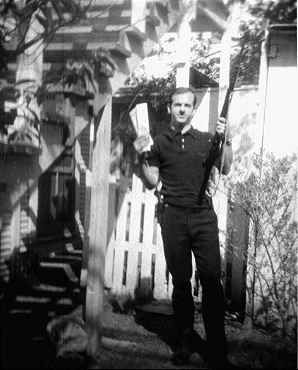 |
Paine’s excellent retention skills are particularly admirable given the “fine clapboard structure” of the Neely Street house, as seen in the backyard photos, is visible but hardly dominates the frame the way the staircase and its support beams do. The clapboard can be seen behind and below the staircase on the left side of the frame. If the photo viewed by Michael Paine on Friday night was 133-C, it is the individual backyard photo showing the least detail of the clapboard structure. If 133-C was possessed by the Dallas police in the format of a “drugstore print”, then still less detail would be visible as the photo would be cropped on its horizontal edges, as well as appearing in its small 3”x3” size.
Considering that the backyard photos, according to the official story, would not be discovered until the following afternoon, it is interesting that it is Warren Commission counsel Wesley Liebeler who brings the subject up during Paine’s testimony. Liebeler, at that time, is seeking to establish some other point, related to the rifle, and does not seem to realize that Paine is describing being shown something which officially had not yet been found. (WCH IX, p. 444)
Michael Paine and the de Mohrenschildt Backyard Photo
Everett Glover was separated from his wife at the start of 1963, and had arranged to share his house with two fellow employees at Magnolia Oil, Richard Pierce and Volkmar Schmidt. Everett Glover was a friend of George de Mohrenschildt, and also with Michael and Ruth Paine. Michael Paine: “We met the Glovers at madrigal singing, we liked to sing madrigals and he was part of the group ... he showed up once or twice at a single adult party dance of the Unitarian Church.” (WCH IX, pp. 451-452)
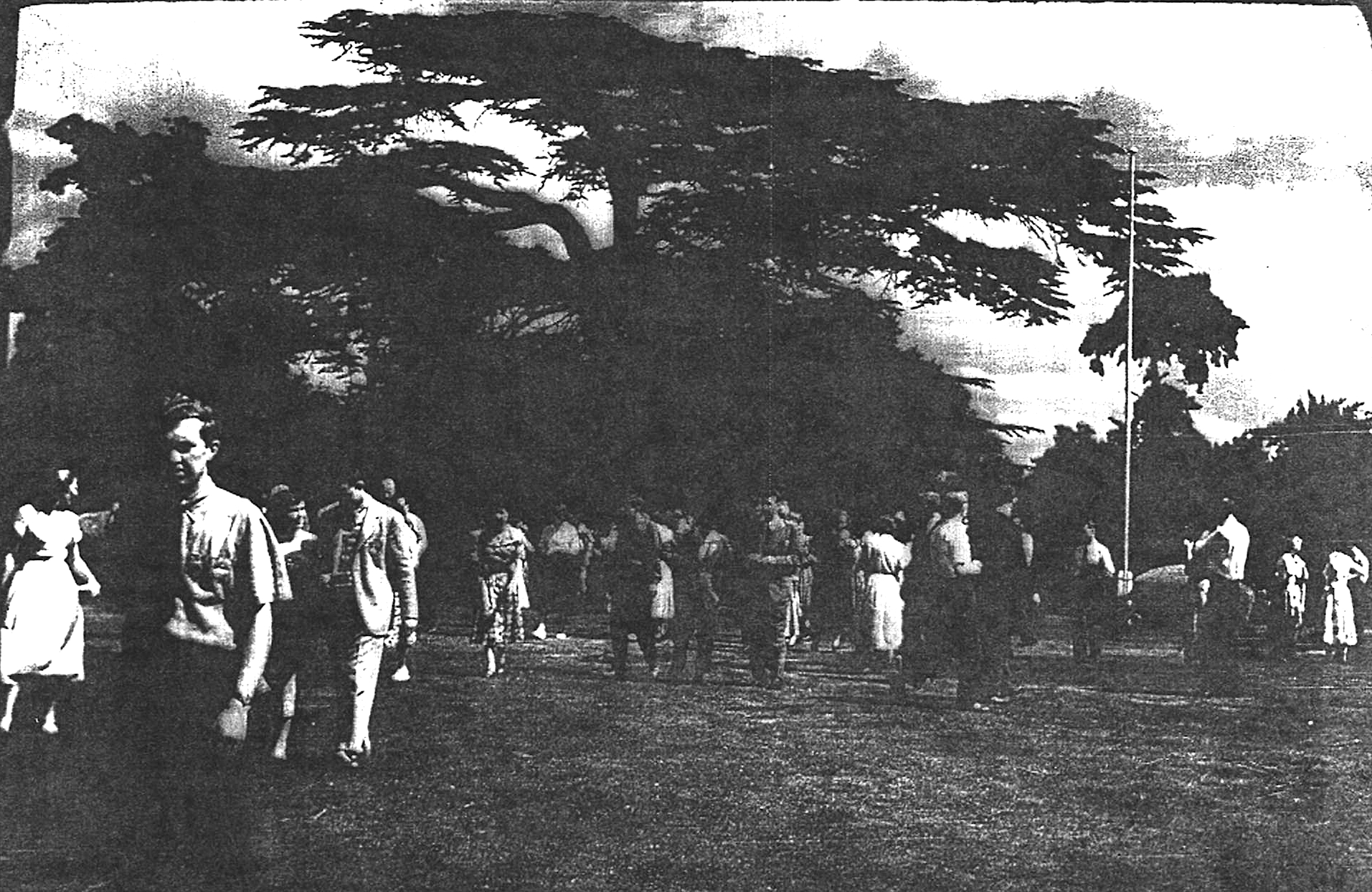 |
| Folk dancers and madrigal singers: a hotbed of intrigue? |
In February, Glover, along with Volkmar Schmidt and others, met Lee and Marina Oswald at George de Mohrenschildt’s home, and they were supposedly impressed enough to arrange their own social occasion and invite the Oswalds. Through their friendship with Glover, the Paines would be invited to this Magnolia Oil party held on February 22,1963, which was the President’s Day holiday. Everett Glover provided the transportation for the Oswalds. The party was said to feature George de Mohrenschildt’s Central American walking tour slideshow, but it really seemed about presenting the Oswalds to new people.15 Michael Paine: “Everett Glover invited us knowing that Ruth was studying Russian ... they were presented to us as an American who had defected to Russia and decided he didn’t like it and came back and brought a Russian wife with him. Would we like to meet these people? Yes, that sounded interesting.” (WCH II, p. 404)
Sometime after this party, a record player lent to Glover by the de Mohrenschildts was, at their request, in turn lent to Marina Oswald, and delivered to the Neely Street apartment by Glover and roommate Richard Pierce. Jeanne de Mohrenschildt had also lent Marina a few instructional English/Russian language LPs to go with this player. Some weeks later, after the Oswalds had moved to New Orleans, Everett Glover was contacted by one of the Paines regarding this record player:
Mr. GLOVER. I got a call on the telephone, I am not sure whether it was Mr. or Mrs. Paine, in which they said the record player – I believe it was the same one I had given or taken over to (Marina) that belonged to the De Mohrenschildts, was there at their house ... I think at this time I learned through them that Marina had gone to join (Lee) in New Orleans.
Mr. JENNER. Was anything said about Mrs. Paine having taken Marina to New Orleans?
Mr. GLOVER. Nothing was said about her taking her to New Orleans, but I do believe I knew at that time that Marina had stayed with her. I think I learned it through conversation with them. I don't remember having heard from or seen the Paines since the time they were at my house until the time that I have learned Marina had gone to New Orleans and had previously stayed with Ruth. And until the time that Mike came over and delivered the record player. I think Mike was the one who brought the record player, and I don't remember the circumstances on that ...
Months later, Glover is contacted again by the Paines:
Mr. GLOVER ... the only other connection I had with them was that later than that ... I got a call from one of the Paines saying they had records that the De Mohrenschildts had given Marina. These were for Russian speaking people learning English, I believe, that they had, and what to do with them? And I said, bring them over here and I will store them ... and I remember Michael Paine brought the records over to me and came in the house, and I talked with him a little bit. At this time Michael Paine told me the last information I had about (the Oswalds). He told me that, I am not sure whether he said they were back, Marina was coming back, or Marina had already come back to Dallas, that Lee had lost his job and that Lee was coming back, and that was in the time I believe.
Mr. JENNER. Was coming back to live or was visiting?
Mr. GLOVER. Well, was coming back. Presumably he lost his job and was coming back here.
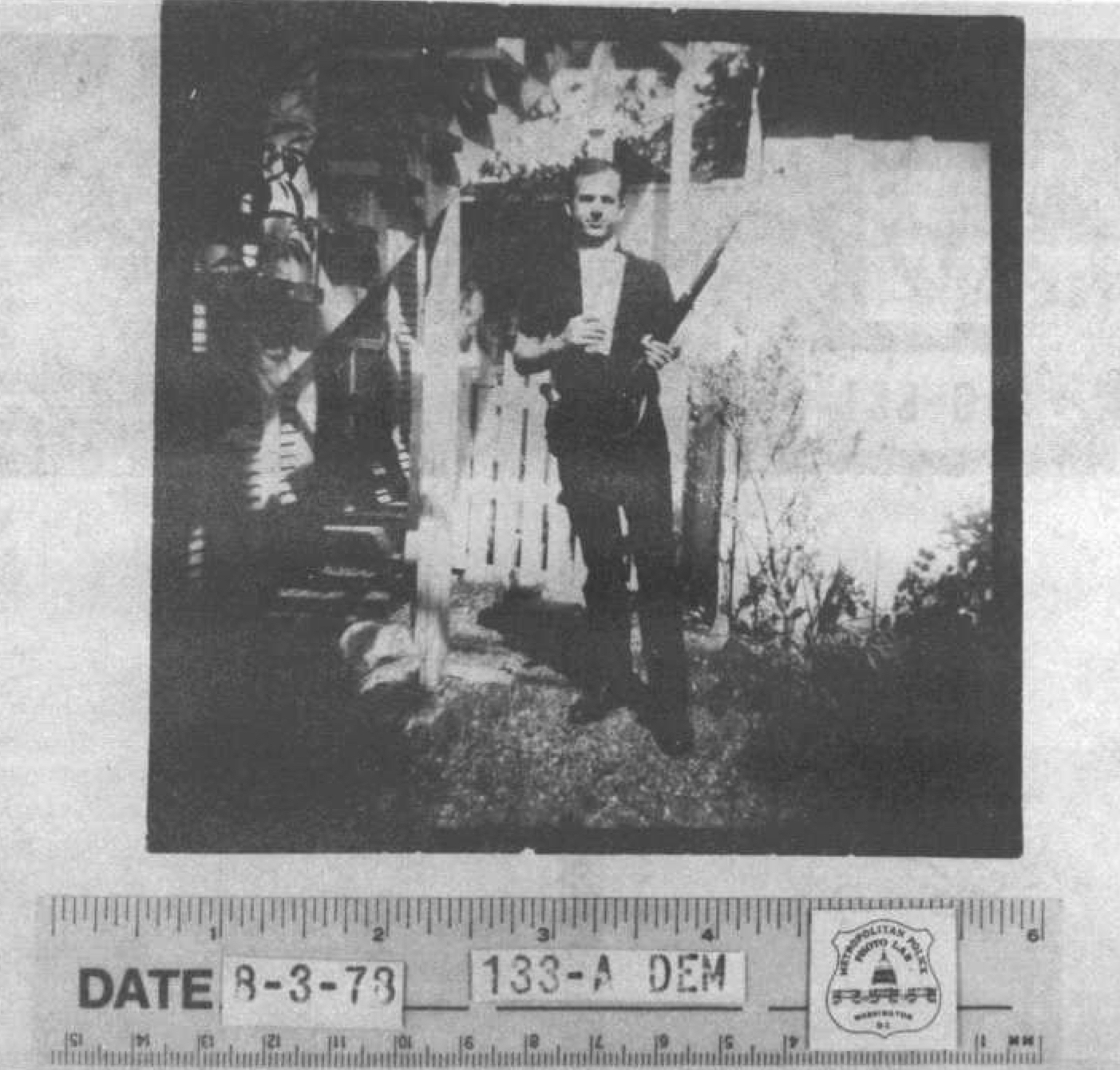 | 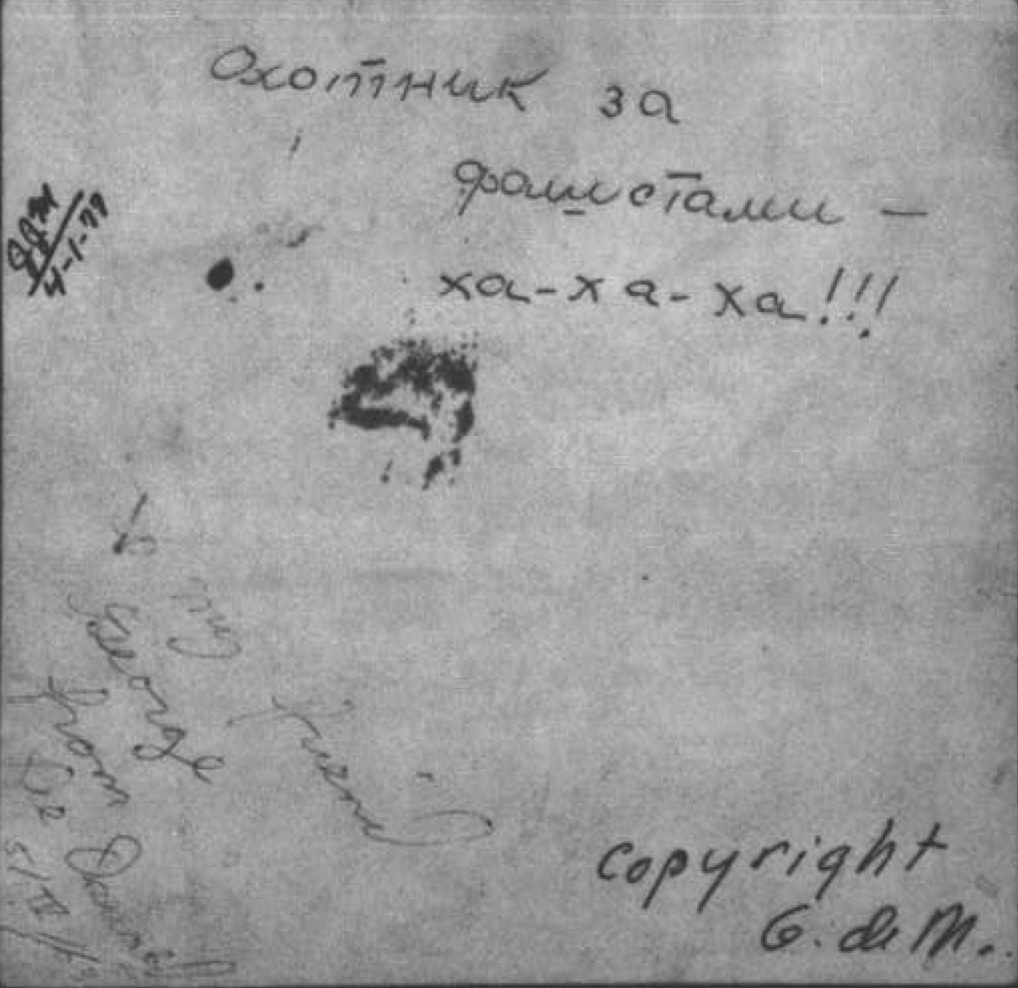 |
The backyard photo known as deMohrenschildt-A, a first generation print which shows information from the original negative cropped from the “drugstore print” 133-A, and which features handwritten inscriptions on its backside, was discovered within the sleeve of one of these language LPs when the deMohrenschildt’s returned to Dallas in 1967. Accepting Glover’s Warren Commission testimony, this photo was presumably inside the LP sleeve when the language albums were returned at about the beginning of October 1963. Presumably, these LPs had travelled with Marina Oswald to New Orleans and then back to Irving, even as they could not be played since the record player had possibly been returned months earlier, as established during Glover’s questioning by Commission counsel Albert Jenner (although when exactly Michael Paine dropped off the record player is not explicitly stated). Conceivably, the backyard photo known as deMohrenschildt-A could have been inserted into the LP sleeve by Oswald at any time between April and September. Or, inserted by the Paines, or someone associated with the Paines, just before the records were returned to Everett Glover. Or, since Everett Glover is uncertain of the circumstances, perhaps the record player was not returned in May but actually at about the beginning of October, and Glover was confused between the record player and the LPs. There is no indication any investigatory agency went to have a look at these LPs after Glover’s testimony, even as important evidence had been uncovered inside other items associated with the Oswalds.
A month after Glover’s appearance, during testimony from George de Mohrenschildt, Commission counsel Jenner would suggest the LPs were actually found in the Paine’s home:
Mr. De MOHRENSCHILDT. We gave (Marina) some records to study English – not mine, but my wife's and her daughter's records, of Shakespearian English, how to learn English, and they obviously still have those records.
Mr. JENNER. Yes, they were found in Mrs. Paine's home.
Mr. De MOHRENSCHILDT. We even gave them a phonograph, I think, a cheap phonograph, to play the records.
 |
Stovall Exhibit A lists the property “taken from” the Paine house in Irving on November 22. The list includes “3 Brown metal boxes 12” x 4” containing phonograph records”. If the language LPs lent to Marina Oswald were among these “phonograph records,” then they would have been taken to Dallas Police HQ, and apparently later that night sent to the FBI lab in Washington. If Oswald had stashed the de Mohrenschildt backyard photo inside a record album later seized at the Paines, it would in all probability been discovered by the Dallas police or by the FBI. If these LPs were found at the Paine home after the assassination rather than delivered to Glover weeks earlier, then the backyard photo must have been inserted into the sleeve after being returned from the custody of the FBI sometime in 1964. Glover, who had assumed much of the de Mohrenschildt’s furniture on their departure for Haiti in April 1963, moved many of these items into a storage locker early in 1964, and it is in this locker the language LPs with the backyard photograph were found.
Glover left Dallas before the de Mohrenschildt’s return, and there have been indications that Ruth Paine had access to the storage locker in the meantime. When the de Mohrenschildt’s discovered the backyard photo, they called the Paines, despite having only been introduced to Ruth once, years before. During an ensuing meeting between both couples, over dinner, the newly found backyard photo was a topic of conversation as well as discussion “generally, of events.”16 In his manuscript “I Am a Patsy”, George de Mohrenschildt described Ruth Paine as “a perfectly charming, charitable Quaker ... (who) helped the Oswalds out of pure humanitarian impulses ... She and her husband were simply admirable people.” (HSCA Volume XII, p. 260) Paragraphs earlier, de Mohrenschildt disparages Marina Oswald’s deportment following the assassination. He was under the incorrect impression that it was Marina who wrote “Hunter of fascists ha-ha-ha” on the back of the discovered photo.
1993: Michael Paine Claims That Oswald Himself Showed Him A Backyard Photo
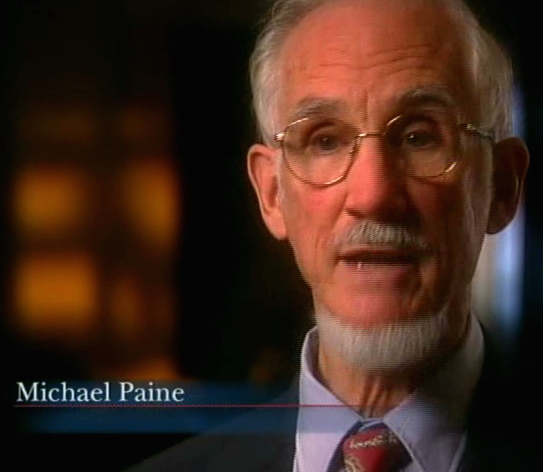 |
“Almost the next thing he does is to pick up this eight-by-ten glossy photo of himself in black with a rifle and a couple of pamphlets ... it was very different from what I had expected to find ... I had been told he was a communist and I kind of expected a social idealist and couldn’t see the connection between this picture of a guy with his rifle there in black clothing. But he was obviously proud of that picture ....” (Michael Paine, quoted in Gus Russo, Live By The Sword, interview conducted 1993)
“When I first met him ... the first thing he showed me was a picture of himself holding a rifle and I could see he was proud of that picture. I had the strong impression that it was an icon of himself that he liked.” (Michael Paine, ABC News, “Beyond Conspiracy”, 2003)
In 1993, Michael Paine began telling interviewers that Oswald had showed him a backyard photo when they first met in the Spring of 1963. If Michael Paine’s relatively recent claim is actually true, then his Warren Commission testimony is severely compromised, a fact which appears to have escaped many mainstream journalists and network research departments. If Oswald showed Michael Paine a backyard photo in the Spring of 1963 it must have been, according to Paine’s timeline, during the visit to the Neely Street address when Paine arrived to drive the Oswald’s to dinner in Irving. This event, if true, is entirely absent from Paine’s long and detailed description of his half hour with Oswald as told to the Warren Commission. If true, and Oswald was offering Michael Paine visual evidence of an apparent tendency to violent fanaticism, it is not at all clear why this troubling information was not passed to Ruth Paine as she continued to forge her friendship with Marina. Ruth Paine claimed to the Warren Commission that she did not know Lee owned a rifle and would not have accepted the presence of a rifle in the same home as her children.
Most critically, if true, it calls into question Michael Paine’s extensive deliberations during his Warren Commission testimony on the supposed “camping equipment” inside a rolled blanket amongst Oswald’s possessions in his garage at the Paine residence in Irving. During Paine’s first appearance before Warren Commission attorneys Wesley Liebeler and Norman Redlich on March 17, 1964, a total of seven transcript pages describe his interaction with a rolled blanket, wrapped with string, lying on the floor of the garage. (WCH IX, pp. 437-443) The Warren Commission would determine that the murder weapon used in the assassination had been wrapped inside this blanket, which had been stored on the garage floor without the Paines’ knowledge of what was in it. Michael Paine’s efforts to explain why he did not make any effort to understand what may have been wrapped, (or allegedly wrapped), in this blanket are strained and tend to over-thinking:
Paine: “ I picked up this package and the first time I picked it up I thought it was camping equipment and thought to myself they don’t make camping equipment of iron anymore ... I supposed it was camping equipment because it was wrapped in this greenish rustic blanket and that was the reason I thought it was a rustic thing ... there was also a certain wideness at one end and then I thought of a folding tool I had in the Army, a folding shovel and I was trying to think how a folding shovel fit with the rest of this because that wasn’t quite, the folding shovel was too symmetrical ... I first thought it was tent poles and then I thought there are not enough poles here, enough to make a tent ... I visualized a pipe or possibly two, and with something coming off, that must have come off kind of abruptly a few inches at 45° angle ... I wasn’t thinking of a rifle. Definitely that thought never occurred to me ... I would lift the package up, move it, put the package down and one time I was trying to puzzle how you could make camping equipment out of something – this is only one pipe in the package ... if I had been the least bit curious I could have at least felt of this blanket but I was aware of personal privacy ... ”
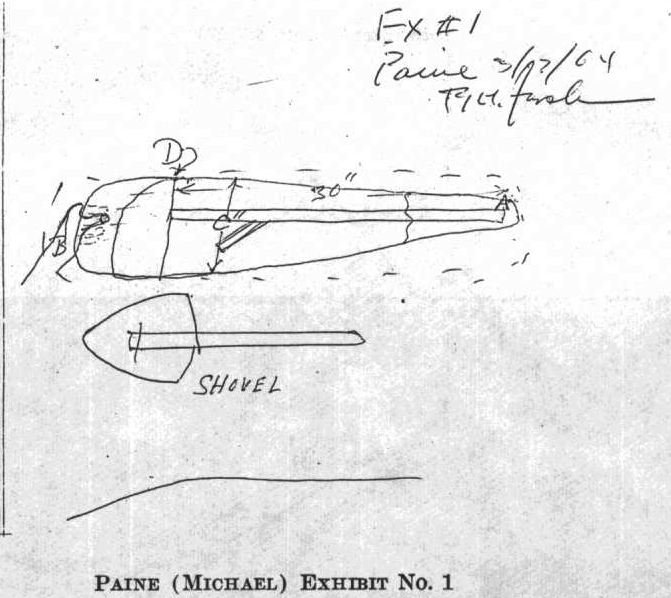 |
| Instead of a rifle, Michael Paine visualized tent poles and folding shovels. |
Neither Liebeler or Redlich asked Paine why, if he was not curious, did he expend so much intellectual energy visualizing tent poles and folding shovels in an effort to understand what might be inside this blanket. He was not asked if he was aware the Oswalds had ever been camping. He was not asked why he did not simply inquire of Oswald what was up with the blanket, which had been in Paine’s way as he worked in the garage (Oswald presumably could be found in front of the television set). Although neither Liebeler or Redlich could know this, if Michael Paine had indeed previously been shown a backyard photo, then all of his supposed puzzling over what was in the blanket is utter nonsense.
It is possible that Michael Paine is simply completely mistaken, and since 1993 has been relating what amounts to a false memory. It is also possible that the story of being shown a backyard photo by Oswald in the spring of 1963, was deliberately concocted by Michael Paine to assist in buttressing the official portrayal of Oswald as a lone nut assassin – a portrayal which had at that time faced renewed public skepticism with the release of Oliver Stone’s JFK. The inclusion and positioning of Paine’s backyard photo claim, in books and network documentaries supportive of the Warren Commission’s findings, favors the latter view. If this is the case, then Michael Paine can be regarded as less the simple madrigal-singing Quaker unwittingly caught up in historic events, and more a conscious collaborator assisting the project of framing Oswald, at least in the public mind, as the lone nut assassin. At the very least, the eagerness by which mainstream publications and broadcasts have presented Michael Paine’s revisionist account, despite the obvious damage this claim does to his Warren Commission testimony and other tenets of the official story, is a demonstration of just how shoddy and agenda-driven these histories really are.
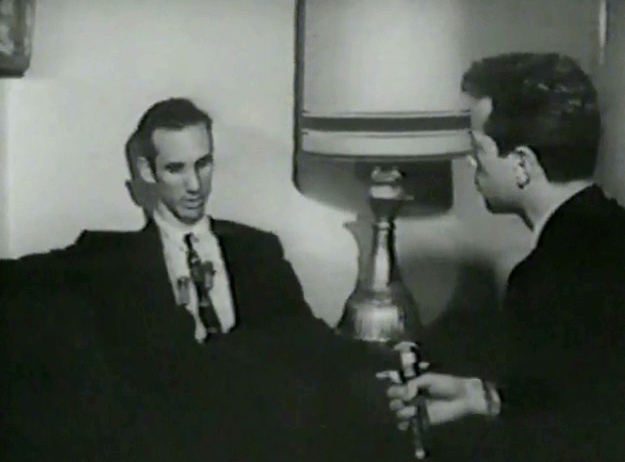 |
Michael and Ruth Paine were interviewed at their home by Dallas television station WFAA on Sunday November 24, 1963. They both shared their impression that Oswald was the lone assassin of President Kennedy, motivated, Ruth Paine suggested, by a realization “that he had an opportunity to no longer be a little guy, but to be someone extraordinary.” Michael Paine would echo: “I think it was a lone wolf thing, the opportunity presented itself to him and he probably wanted to make a mark on society by – suddenly it occurred to him that he could.” The Warren Commission would later presume Oswald’s motivation using similar language.
Fifty some years later, the informed benign version of what occurred in 1963 would concede the Paines’ involvement with the Oswalds had purposes other than officially stated, but which did not necessarily directly relate to an assassination plot directed against JFK, although the Paines did assist in the post-assassination framing of Oswald, in deference to the authorities and by intuiting what was really happening.17 This view is supported by the intercepted phone call from the afternoon of November 22, 1963, where Michael Paine speculates that Oswald may have been involved but was not “responsible.” If the Paines had been directly involved in an assassination plot, this phone call would not have happened.
One pm November 22, 1963 – “We both know who is responsible”
During his questioning of Michael Paine on March 18, 1964, Warren Commission counsel Wesley Liebeler addressed the issue of a particular phone call which was referred to in FBI records. Liebeler handled this issue in a notably lawyerly fashion:
MR LIEBELER. Now, there has been a report that on November 23, 1963, there was a telephone call between a man and a woman, between the numbers of your residence and the number of your office, in which the man was reported to have said in words or substance, “We both know who is responsible for the assassination.” Have you been asked about this before?
MR PAINE. I had heard that – I didn’t know it was associated with our numbers. I had heard a report that some telephone operator had listened in on a conversation somewhere, I don’t know where it was. I thought it was some other part of the country.
MR LIEBELER. Did you talk to your wife on the telephone at any time during Saturday, November 23, on the telephone?
MR PAINE. I was in the police station again, and I think I called her from there.
MR LIEBELER. Did you make any remark to the effect that you knew who was responsible?
MR PAINE. And I don’t know who the assassin is or was; no, so I did not.
MR LIEBELER. You are positive in your recollection that you made no such remark?
MR. PAINE. Yes.
Liebeler makes reference to a “report”, within which the date of the phone call is established as November 23, 1963. Liebeler should have known that subsequent information, including phone records, corrected the report to which he refers, and established the actual date of the phone call as November 22. Inside a lengthy collection of FBI reports dated February 11,1964, a sub-section is titled ‘Investigation Regarding Alleged Telephone Call Between CR 5-5211, Arlington, Texas and BL 3-1628, Irving, Texas on November 23, 1963” (the telephone numbers identified are Michael Paine’s Bell helicopter office in Arlington, and the Paine household in Irving). Part of this investigation is a January 25, 1964 report by FBI Special Agent Robert Lish listing long distance phone calls charged to the Paine’s number in Irving, from late October to mid-December 1963. These records, made available from the Southwestern States Telephone Company, establish the phone call in question was made on November 22. (FBI 105-82555 Oswald HQ File, Section 83, p. 127) Both Michael and Ruth Paine told the Warren Commission, several times, that a phone call between themselves, from the same locations, occurred on November 22, 1963 at about one pm. Liebeler’s questions to Michael Paine have the dismissive effect of labelling a supposed November 23 phone call, discussing “who is responsible,” as something like an unestablished rumor.
 |
The initial report on this phone call was generated by Special Agent Lish on November 26, 1963. It summarizes an interview with Captain Paul Barger of the Irving Police Department, who had “received information that a male voice was overheard in a conversation,” during a telephone call held on “November 23”. Barger provided both the Arlington number from Michael Paine’s office, and the Paine’s residential number in Irving. “Captain BARGER advised that the male voice was heard to comment that he felt sure LEE HARVEY OSWALD had killed the President, but did not feel OSWALD was responsible, and further stated, “We both know who is responsible.” Barger does not identify the source of his information. (FBI 105-82555 Oswald HQ File, Section 67, p. 51)
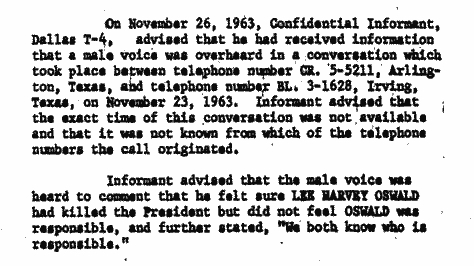 |
This information is repeated, essentially word-for-word, in the FBI Gemberling Report of January 7, 1964, but instead of naming Paul Barger, the source is identified as Confidential Informant Dallas T-4 (CD 206, p. 66). Why this designation when there was nothing confidential about Barger’s identity or original statement? Barger is interviewed again by the FBI’s James Hosty on January 17, 1964, where this question seems to come up, as Barger says he “had no objection to the use of his name in connection with information he furnished ... ” (CD 329, p. 91) Barger claims “he made extensive inquiry in an effort to identify the name of the individual who furnished him with the information concerning a telephone conversation ... He said he had an unusually large amount of work assignments during that period and these assignments kept him from recalling the time of day that this information was received.” Barger said he was assigned to “obtain a list of telephone tickets, or other helpful information” from the Southwestern States Telephone Company. “He felt sure the information he furnished SA LISH had come from some telephone company sources, but he was still unable to identify the individual who related it to him ... ”
Additionally, Barger claimed the information he passed to Lish in November was based on his “personal recollection”, as he did not have his handwritten notes at the time. In what he identified to Hosty as his original handwritten note, the overheard dialogue from the male caller is presented as: “Oswald wouldn’t have any reason to do it, but when you get right down to it, the only guilty person is that bastard himself.” That is significantly different from the information provided on November 26, such that even “an unusually large amount of work assignments” cannot account for the disparity. If Barger actually received the information as first reported, from a source at Southwestern States Telephone Company sometime during the assassination weekend, his response to such potentially explosive information is notably muted and casual.18
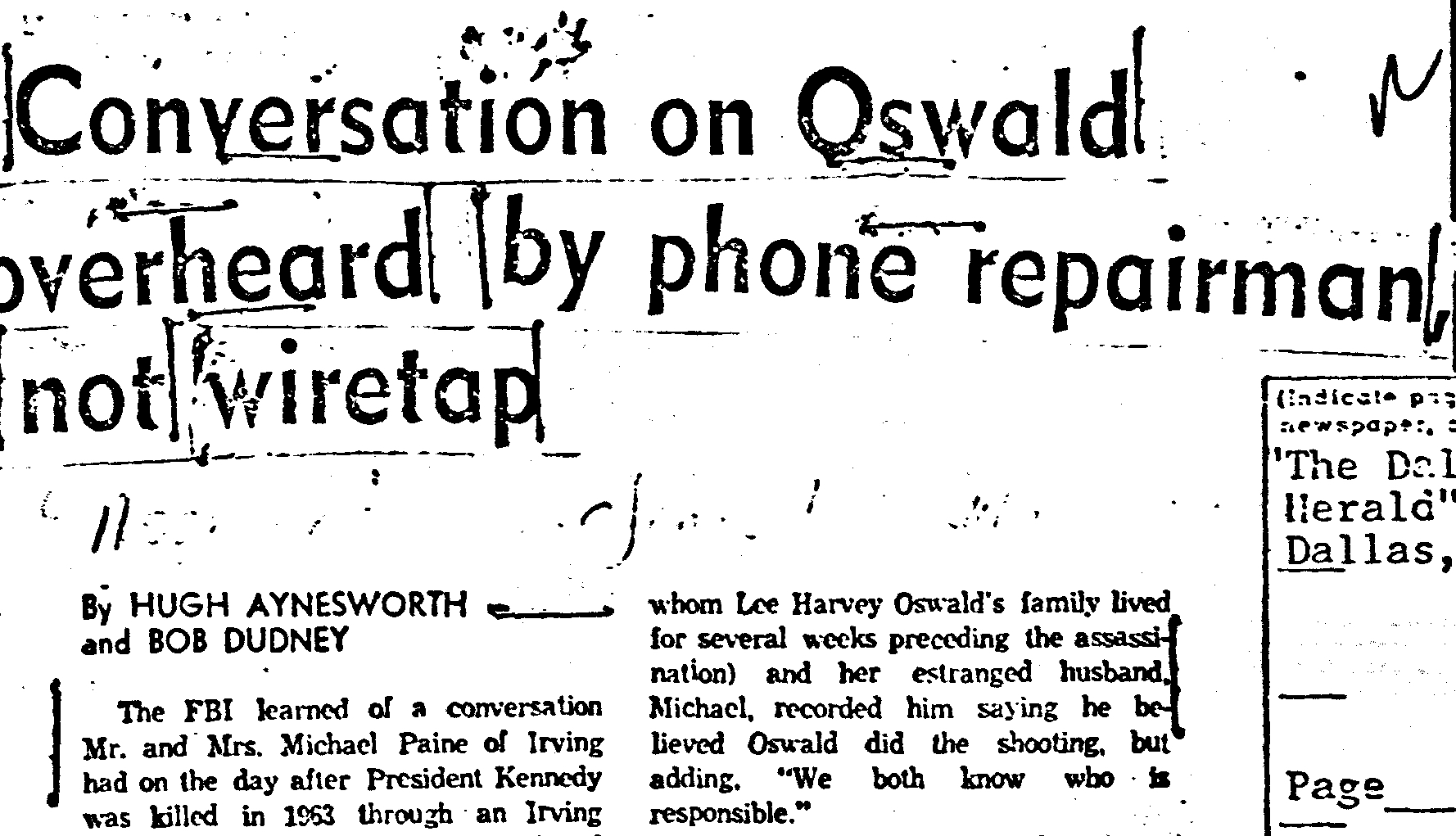 |
The Gemberling report specifying Confidential Informant Dallas T-4 was classified and not shared with the Warren Commission. It was declassified in 1976, and Bernard Fensterwald of the Committee to Investigate Assassinations determined that “confidential informant T-4 is almost undoubtedly a wiretap recording. The nomenclature is widely used by the FBI to indicate to their own agents the wiretap source of a piece of information without having to reveal the source to outsiders.”19 Fensterwald’s allegations were repeated by Congressmen Thomas Downing and Henry Gonzalez, who publicized the Paine’s “we know who is responsible” conversation on the House floor. In a 1976 Dallas Times Herald article written to refute the allegations of a wiretap on the Paine’s residential line, Hugh Aynesworth interviewed Paul Barger, then working for the Irving Independent School District. Barger claimed the source of his original report was known to him after all, and was a telephone repairman who by chance, “due to some mechanical difficulties ... he was checking out the line” and inadvertently listened in on the conversation. Barger, supposedly, did not identify the man back in 1963 over concerns of reprimand. Barger added he “did not believe the FBI had any wiretap on the Paine house, ‘If they did,’ he said, ’they wouldn’t have been asking me for what happened.’” (FBI 62-109060 JFK HQ File, Section A28, p. 71-72). The phone call itself, and its content, are not denied.
Michael Paine denied the content of the call during an interview conducted December 23, 1963 by FBI Special Agent Bardwell Odum. “Mr. PAINE advised that on November 23, 1963, he did not make any statement to anyone that he felt sure LEE HARVEY OSWALD had killed the President but did not feel OSWALD was responsible ... Mr. PAINE advised that what he did say, in fact, in a conversation with his wife, was that he was not sure that OSWALD had killed the President because at that time he had no facts at his command ... Mr PAINE flatly denied at any time saying that he felt he knew who was responsible for the President’s death other than OSWALD.” (CD 206, p. 67)20 Paine’s Warren Commission testimony to Liebeler – that he did not know the “who is responsible” conversation was associated with his telephone numbers – is challenged by this report.21
Paul Barger’s 1976 story of a telephone repairman, as well as his initial stories of being so busy on the assassination weekend that he could not recall either the source of the information or when it arrived to him, do not seem credible in the absence of cross-examination. The January 7 Gemberling identification of Confidential Informant Dallas T-4 is probably not referring to Barger, since Barger had been identified by name in an FBI report from weeks earlier, and there was no confidential necessity to that interview. Barger’s handwritten note presented on January 17 is unconvincing, and was not pursued. The Warren Commission was apparently unaware that telephone records established the phone conversation in question occurred on November 22 instead of the following day. These unsatisfactory efforts suggest that the Paine telephone conversation was indeed captured through a wiretap on the Paine’s residential phone, that Paul Barger assisted in covering up the source of the information by fudging his recollection and attributing an incorrect date to the phone call in question, and that Gemberling revealed the true source (Dallas T-4) for internal FBI use.
Michael Paine has yet to be asked directly who he thought, at one pm on November 22, 1963, “was responsible” for the assassination.
Notes
1 FBI 105-82555 Oswald HQ File, Section 83, p. 75. John Armstrong discusses this phone call in Harvey and Lee, pp. 832-835.
2 Oswald’s J-C-S timesheet shows him, on April 2, finishing his work day at 5PM (CE 1856). During his second session with Warren Commission, March 18, 1964, Paine would place the supper date as April 10, which would have provided Oswald an alibi against his alleged involvement with the Walker shooting. (WCH II, p. 393) But Paine is a bit vague, and he defers to Ruth Paine’s calendar which, for events beginning March 1963, becomes for the Warren Commission a sort of master-clock determining who went where when. Ruth Paine’s calendar says dinner on April 2 was at 7 PM.
3 This pickup had been pre-arranged, so Marina Oswald’s lack of preparation sticks out, as does the total of about 30 minutes to gather and pack for an outing of just a few hours. Perhaps every contingency had to be accounted for, but Ruth Paine also had young children and would have had similar items waiting at her home. Marina’s story of the origin of the backyard photos also has her “really busy” with child-related chores. Seeing as the official narrative features numerous events which seem to be combinations or merging of separate stories and incidents, it is not far-fetched to ask if Michael Paine took the backyard photos during this half hour. This scenario would require the dinner get-together occur on a Sunday in March or after April 6, Oswald’s last day at J-C-S, when Paine could arrive closer to four pm than six (as the shadows in the backyard photos indicate they were exposed mid-to-late afternoon.
4 At the time of this dinner, the Warren Commission held that Oswald had already spent several weeks surveilling Walker’s home as part of a meticulously planned assassination attempt, had ordered and received a rifle by which to carry out this plan, had been spending time practicing with the rifle, and had posed for the backyard photos.
5 Marina Oswald would later tell the Commission that Lee had told her he and Paine had attended a meeting at which Walker was present. This information resulted in a further deposition for Michael Paine on July 23, 1964 (WCH XI). Paine could not explain Marina’s remark, but allowed that he had once attended an event where Walker spoke – a National Indignation Committee meeting December 13, 1961.
6 If Ruth Paine took these pictures, she may not have had them developed when she returned to Irving. One roll of exposed 620 film is listed as having been found in a metal index card box found November 23, 1963, or so it appears on the typed list created November 26, 1963 by the FBI after these items had already been sent to the FBI lab in Washington and then returned to Dallas (CE 2003; WCH Vol. XXIV, p. 337). There are two typed lists from this date, on the other the description is “one roll 620 plus x film exposed (?)” (FBI JFK HQ files, Section 150, p. 125) In the original list of items taken from the Paine house (Stovall Exhibit A), rolls of film are listed but not always identified and not associated with the two file boxes on the list. These items were seized on November 22 not on the 23rd. The New Orleans photo set was not included with the initial batches of photos shown Marina Oswald.
7 Oswald was said to enjoy football, and chances are that’s what he spent the day watching. The hometown Dallas Cowboys, then in their fourth NFL season, played in San Francisco against the lowly 49ers that afternoon. As a west coast start, the game would have started about 3-3:30 PM Dallas time, and lasted on toward the dinner hour, which would have contributed to the perception Oswald was in front of the television the “entire day.” Although ahead 21-7 in the second quarter, the Cowboys would be outscored 21-3 in the second half and lose the game. It was a memorable afternoon in Cowboy’s history, as quarterback Don Meredith would throw for 460 yards, a franchise record at the time.
8 Oswald, supposedly, had been preparing to search for work in Houston and maybe Philadelphia, and therefore his return to the Dallas area could not be expected or anticipated. Everett Glover, however, would tell the Warren Commission that Michael Paine indicated to him Oswald would return to Dallas sometime early in October.
9 FBI interview November 23, 1963, report dated November 24. see Oswald 201 file, Volume 3, Folder 9B, p. 92. A year earlier, George de Mohrenschildt had inquired for Oswald about possible employment at Collins Radio. Curiously, Robert Surrey, General Walker’s confidant, told the FBI that the vehicle seen parked in front of Walker’s home in photograph CE5, with the license plate cut out, “appears identical” to one owned by Charlie Klier, a frequent visitor to Walker’s home, and who was employed by Texas Instruments. (CD 1245, p. 104)
10 “It was rather sparsely attended, most of them were down spitting at Stevenson.” (WCH II, p. 388)
11 Oswald supposedly knew nothing of the ACLU, but did know the FPCC, SWP, CPUSA, Hall-Davis Defense Committee, et al, and was “familiarizing” himself with right-wing outfits “for whatever his purposes.” This is an example of how disjointed Michael Paine’s testimony can be. It is curious that a 30 minute conversation from April 1963 can produce pages of testimony, but this 35 minute drive to the ACLU meeting followed by a second 35 minute drive back to Irving produces just two recollections, including the spurious notion that Oswald needed to have the ACLU explained to him, which, according to Paine, happened on both ends of the journey.
12 Just minutes before this, during his testimony, Paine had been questioned closely about Oswald and Walker. Krystinik: “The first notice I made of Oswald is when he stood up and made a remark about General Walker in reference to him not only being anti-Catholic but anti-Semitic in regard to his comments about the Pope. Then he made further comments that a night or two nights before he had been at the General Walker meeting here in Dallas.” (WC testimony March 24, 1964)
13 The home address listed on this form – “3610 N. Beckley” – was non-existent. Previously, when filling out such forms, Oswald used actual addresses. A change of address card dated October 11, 1963 listed the Paine’s Irving home as a forwarding address (Holmes Exhibit 3-A), although the card has a New Orleans postmark, and does not appear to be Oswald’s handwriting.
14 This skill set is not always evident, as Paine’s Warren Commission testimony has its share of hazy memory moments. Paine was evidently fully engaged during the Neely Street introduction, retaining precise recollection of details of the house, along with apparently complete recall of the initial conversation.
15 Everett Glover had met Lee and Marina, through George de Mohrenschildt, several times before this party. Stories about the party, particularly on the topic of Ruth Paine’s introduction to Marina Oswald, are fuzzy and contradictory. De Mohrenschildt, for example, would tell the Warren Commission that he could not observe Ruth Paine or the Oswalds because it was dark in the room to facilitate his slideshow. Everett Glover, on the other hand, would say that the de Mohrenschildt’s were only there for a few minutes, and he does not refer to a slideshow. Volkmar Schmidt would claim he arranged the event but could not attend, while others like de Mohrenschildt and Glover say he was there.
16 See Ruth Paine Orleans Parish Grand Jury testimony April 18, 1968, pp. 7-8, and de Mohrenschildt manuscript, “I Am A Patsy”, HSCA Volume XII, pp. 253- 258.
17 This is the “benign” version, which does not account for the Imperial Reflex camera’s use in New Orleans. Based solely on the official record, a far less benign version can also be constructed. Compare what happened with the Paines following the Warren Commission, to what happened to George de Mohrenschildt, who had made several statements, privately, to the effect that Oswald may have in fact been a patsy. The Paines walked away, while de Mohrenschildt complained, ahead of his alleged suicide, that he had been ruined.
18 Paul Barger was also the Irving Police representative to whom Ruth Paine personally delivered the Russian book which she wanted sent to Marina, and in which the so-called Walker note was discovered. FBI 62-109060 JFK HQ File, Section 150, p. 97.
19 Fensterwald’s analysis has been confirmed through release of more FBI documents and background over the years. Confidential Informants have been identified as both human and mechanical in the FBI documents. If a wiretap had been placed on the Paine residential phone line, it likely was the result of Marina Oswald’s presence, rather than specific interest in either of the Paines.
20 At the time of this conversation, one pm on November 22, the President’s death was known only to a few people at Parklands Hospital.
21 See also the James Hosty FBI report on Michael Paine December 30, 1963, CD 263, p. 7. This is the original filed report on the Paine interview of December 23, 1963. The interview is mostly concerned with Paine’s relationship with his father. The denial of stating others were responsible appears as a single sentence concluding the brief report.
Series Bibliography
- Warren Commission Hearings, Exhibits and Documents
- House Select Committee Report and Appendixes
- Sylvia Meagher, Accessories After The Fact
- Dick Russell, The Man Who Knew Too Much
- Peter Dale Scott, Deep Politics and the Death Of JFK
- John Newman, Oswald and the CIA
- John Armstrong, Harvey And Lee
- Edward Epstein, Legend: The Secret World of Lee Harvey Oswald
- Gus Russo, Live By The Sword


